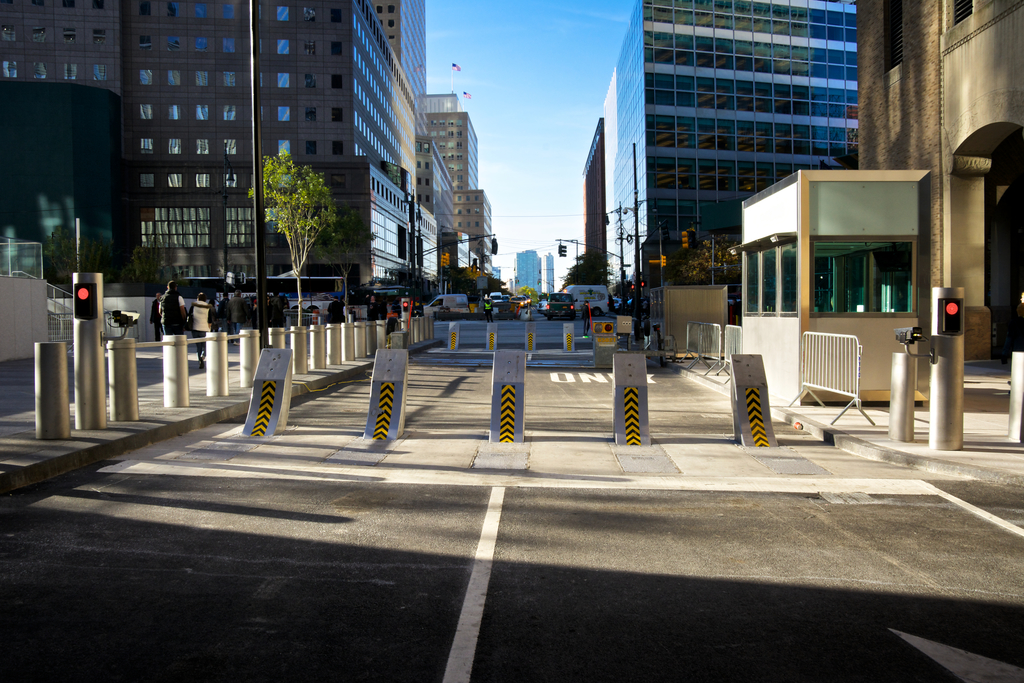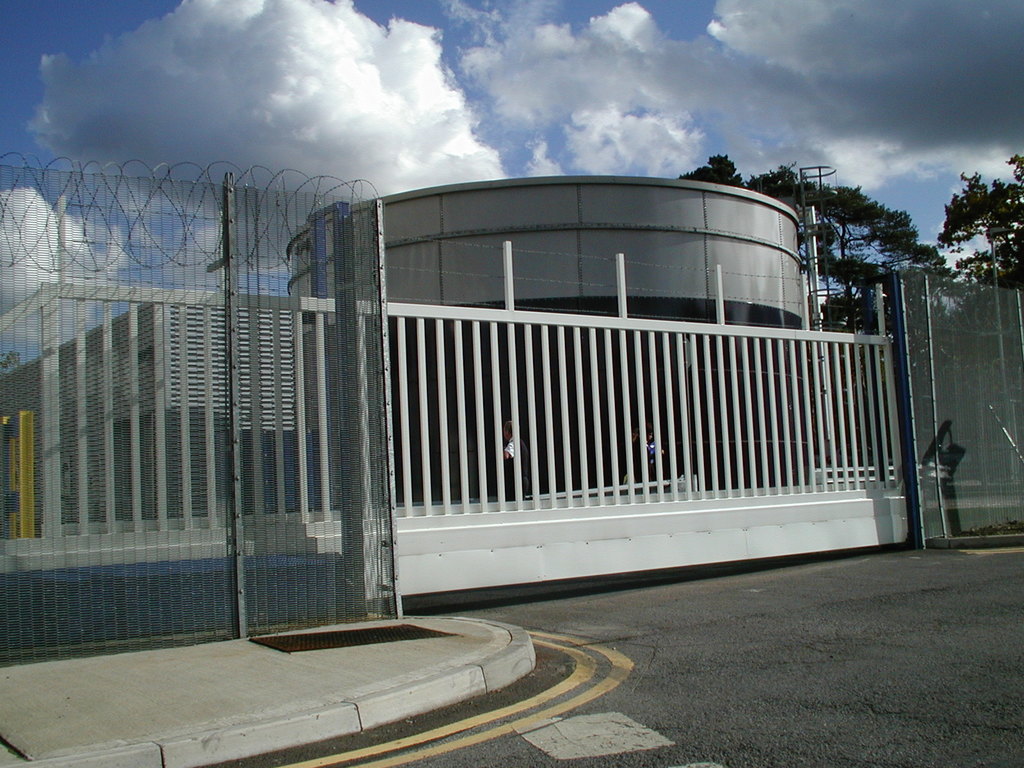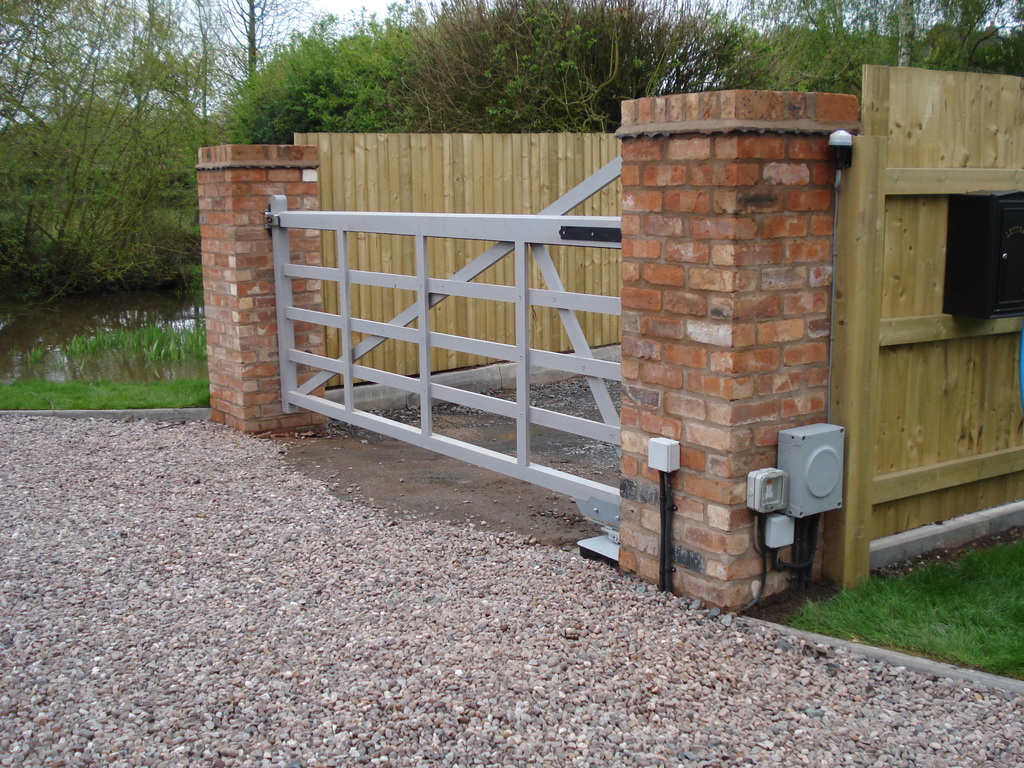
Brian Sims
Editor

Brian Sims
Editor
Powered gates and barriers are an increasingly important part of multi-faceted security systems used to protect car parks, delivery areas and private entrances, explains Graeme Hazlewood.
PREVIOUSLY INSTALLED almost exclusively in commercial environments and high net-worth homes, powered gates and barriers are now regular features of inner-city apartment complexes, public and multiple-occupancy buildings. Powered gates and barriers definitely improve security, but the risks generated by sub-standard installations and poor maintenance should not be under-estimated. The Door and Hardware Federation (DHF) considers that of around 500,000 automated gates in service in the UK, fewer than 30 per cent are installed and maintained safely – a seriously worrying statistic.
Accidents in recent years in the UK and Ireland caused by gates closing or opening without warning, jamming, falling from the guide tracks, or malfunctioning as a result of faulty electrics, have resulted in death and serious injury.
The landlord, freeholder or building manager is ultimately responsible for the health and safety of residents, visitors and users and can face prosecution under the Health and Safety at Work, etc. Act 1974. It is in their interest to ensure gates and barriers are not only installed to the requisite standards but also maintained by a competent organisation. This is the challenge; most purchasers who don’t regularly specify or procure installation or maintenance services for automated gates find it hard to determine what to look for when selecting a competent supplier.
Making informed decisions
The National Security Inspectorate (NSI) and the DHF recognised the need not only to establish a standard for the industry to work to but also to create and promote an approval system so those installers and maintenance companies working according to best practice would be easily identifiable by consumers.
Those familiar with security and fire-systems installation know that NSI Gold and Silver certification is recognised as the hallmark of excellence in these sectors. These approvals are a benchmark of competence that buyers of security and fire services use to make informed choices. The addition of an approval for powered gates and barriers was a natural step, drawing on the integrity of the NSI brand and enabling buyers to use NSI certification as a benchmark for a broader range of security and protection services.
Although there were already some standards in place for installers to work to, they weren’t aligned to the lifecycle of the product, i.e. the design, manufacture, installation and maintenance.
An example is the fact that powered gates are considered machinery in the eyes of the law. As such, they are covered by the Supply of Machinery (Safety) Regulations 2008 (SMR). New machinery must comply with the essential health and safety requirements of this legislation. In addition, the machine must be CE-marked under the 2006/42/EC Machinery Directive and supported by a declaration of conformity and a technical file retained for 10 years by the gate manufacturer or installer.
The DHF’s role, as technical experts, was to review every standard and code of practice that governed other parts of the installation and maintenance of powered gates and barriers, including safety legislation. This was distilled in conjunction with NSI into DHF TS 011:2016 Code of Practice for the Design, Manufacture, Installation and Maintenance of Powered Gates and Traffic Barriers. The Code was designed to raise levels of safety and security associated with powered gates and provide practical guidance on raising standards and meeting legal obligations.
Promoting the approval
Having worked with the DHF to produce the standard of competence, NSI created approvals at both the Gold and Silver levels. Silver approval is granted after a technical review of competence against the DHF code of practice for the installation and maintenance of powered gates, and an assessment of the integrity and stability of the business. To achieve Gold approval, the organisation must also operate an ISO 9001 Quality Management System, to ensure it manages its business operations (including relationships with its customers and employees) appropriately and to a high standard, while having in place a process of continual business improvement.
A group of companies from those who had been lobbying for higher standards in the powered gates industry formed the pilot group to assess the new approvals and ensure they were fit for purpose and market-ready. They were delighted to be part of the process of establishing the certification scheme that would enhance the credibility of the sector. Their experience was both positive and business-enhancing, with Autogate Systems Ltd director Steve Broughton commenting: “Achieving Gates Gold approval with NSI sends out a clear message to customers that safety and quality are of the utmost importance.” A1 Security director Paul Beck added: “Our business being awarded NSI Gates Gold approval provides reassurance to customers that they are receiving the best possible product and service.”
The successful launch of NSI’s powered gates and barriers approval was predicated on recognition across the spectrum of interest that regulation and standards are an essential part of improving safety and quality. Companies achieving NSI approval demonstrate they meet the highest standards and are working to best practice in the industry. Their customers can be assured the product they’ve bought is correctly installed and will be maintained to the highest safety standards, backed up by all the necessary documentation.
Powered gates tips
If you have powered gates installed it would be worth making the following checks. Look at the gates and see whether there is any obvious evidence of safety equipment in operation. This can include:
Owners and managers of workplace gates should be aware that they are bound by the Workplace Regulations 1992 and the Health and Safety at Work, etc. Act 1974 to ensure their gates are maintained in a safe condition.
If you want to know more about powered gate safety, the DHF runs Gate Safety Week, a campaign to create awareness of the need for correct installation and maintenance of powered gates. The campaign is designed to educate and inform specifiers, professional installers and the general public about the risks posed by poorly installed and maintained powered gates. It also shows how to report an unsafe gate and describes what safety features to look for in a powered gate. This year’s Gate Safety Week runs from 9-15 October. Visit www.gatesafetyweek.org.uk for more information.
Graeme Hazlewood is business development director at National Security Inspectorate. For more information, visit www.nsi.org.uk



National Security Inspectorate
Sentinel House
5 Reform Road
Maidenhead
SL6 8BY
UNITED KINGDOM
01628 63 7512